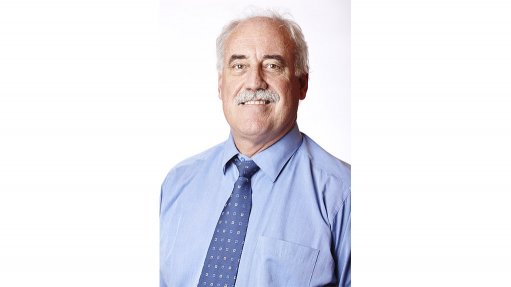
MARTIN VAN SCHOOR Old-fashioned techniques still have a place in modern mining
Despite new and innovative mining technologies continuing to enter the mining sector, tried-and-trusted technologies may still have an important role to play, says working face consumables manufacturer Terramin CEO Martin van Schoor.
New mining technologies can provide many benefits, such as reducing labour and lowering employee numbers in the work space, thereby limiting exposure to injury, and safety risks, as well as increasing productivity. However, many of these new technologies may require costly maintenance by highly skilled technicians and operators, who might also be in short supply.
Further, some new technologies are implemented by individuals who, at times, may not have much on-site or mining experience, which could result in decisions being made remotely, creating real-world difficulties that are not immediately apparent on paper, he tells Mining Weekly.
Van Schoor cites the implementation of electric rock drills in certain local underground operations as an example. Electrically powered rock drilling was regarded as a way to enhance hearing conservation for mineworkers who previously used traditional pneumatic rock drills.
While electric rock drills have a lower noise emission than pneumatic rock drills, the heat generated by the electric motors creates another challenge for underground operations. Ventilation and cooling are already quite challenging underground, especially considering the extreme depth of South Africa’s mines and the confined working spaces or stopes.
Unreliable electricity supply from the grid could further complicate the use of electric rock drills, some of which are imported, Van Schoor claims.
Theft is another practical factor that decision-makers may not have considered when implementing this technology in South African underground mines. “The electric cables would presumably be attractive in this regard,” he says.
While further advances in rock drilling include rubber- and track-motive, cabbed drill rigs, the cost of using such technology – including the specialist skills required – are mostly prohibitive, particularly for start-ups and greenfield operations.
“Compressed air has powered the industry for many years, and, in my view, there will still be a need for pneumatic equipment,” says Van Schoor, adding that Terramin’s product mix is reliant on the presence of compressed air.
He further notes that refuge bays or places of safety have, to date, relied on the supply of compressed air for ventilation.
Van Schoor adds that, when compared with electro-, hydraulic-, or hydro-powered equipment, pneumatic equipment can mostly be implemented and operated at a relatively low cost without the risk of cable theft, power outages, high-pressure leaks or additional heat creation. Pneumatic equipment has also shown that even labourers with a basic education can maintain the drifters, rock drills and related mining equipment at a far lower cost, while electrical connections mostly require the services of a competent authority for connections.
The proper and enforced use of hearing protection – such as earmuffs or plugs, as well as sound-abatement fitments – may be a cost-effective alternative solution worth considering.
While Van Schoor acknowledges that new mining techno- logies involving digital con- nectivity, ventilation on demand, unmanned equipment activation and operation from remote locations may be solutions to many challenges, he also believes that the implementation of these technologies is not as straightforward in developing countries as it is in first-world locations.
Further, these technologies might not be suited to certain orebody environments. Those implementing these technologies would need to consider locational and socioeconomic factors.
Despite the promising advances in mining technologies, there is still a need for some old-fashioned practicality and human interaction, especially in Southern Africa, where mining operations still require much manual labour and interaction with affected communities, concludes Van Schoor.